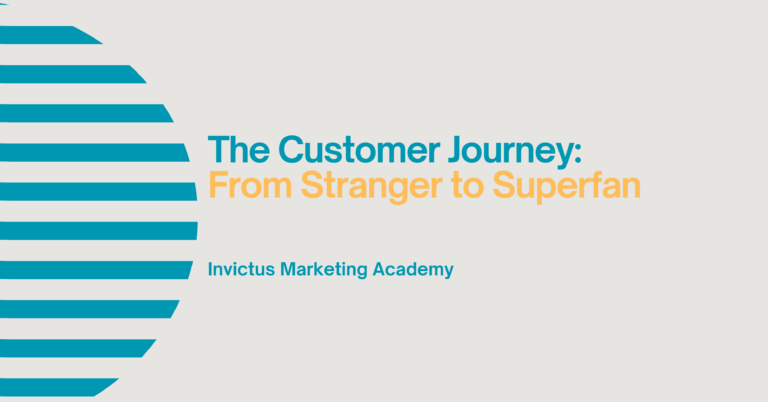The Marketing Mix: More Than Just the 4Ps
Most people who’ve dipped their toes into marketing have heard of the “4Ps”: Product, Price, Place, and Promotion. For decades, these elements have formed the foundation of marketing practice — and with good reason. They’re practical, memorable, and help ensure that all the key areas of marketing are considered when developing a plan.
But like any good framework, the marketing mix has evolved. Today, particularly in service-based industries, we also talk about 7Ps — adding People, Process, and Physical Evidence into the equation.
So, what exactly is the marketing mix, and how do these elements work together to deliver real value to customers and drive business performance?
The Original 4Ps
Let’s start with the basics. The traditional marketing mix was introduced by Jerome McCarthy in the 1960s and later popularised by Philip Kotler — two major figures in marketing education.
Here’s what each “P” stands for:
1. Product – What are you offering?
Your product (or service) is the starting point. It needs to meet a specific need or solve a problem for your audience. This covers everything from design and features to quality, brand name, and after-sales service.
Ask yourself:
- What are the benefits of this product?
- How is it different from competitors?
- Does it meet real customer needs?
2. Price – What’s the cost to the customer?
Pricing affects not only revenue but perception. Too high, and you might lose customers; too low, and people may assume it lacks quality. Price also plays a role in positioning your brand in the market.
Consider:
- What pricing strategy suits your audience — premium, penetration, skimming, economy?
- How do you respond to competitors’ pricing?
- Are you pricing for value or volume?
3. Place – Where and how is it sold?
This refers to your distribution strategy. Are you selling online, in-store, through a third party, or directly to customers? Place is about convenience and accessibility.
Think about:
- Where do your customers expect to find your product?
- How can you make purchasing easier?
- What channels give you the best reach?
4. Promotion – How will people hear about it?
Promotion covers all the ways you communicate with your audience — advertising, public relations, social media, email marketing, events, and more.
Ask:
- What’s your message?
- Which channels will reach your audience best?
- How do you measure the impact of your promotion?
Expanding to the 7Ps
The original 4Ps were developed with physical products in mind. As service-based businesses became more prominent — think finance, hospitality, healthcare, education — marketers recognised the need to expand the model.
Enter the 7Ps, with three additional elements:
5. People – Who delivers the experience?
In service industries, people are often your most valuable asset. Their knowledge, attitude, and behaviour directly affect customer satisfaction.
Key questions:
- Are staff properly trained and motivated?
- Do they represent your brand well?
- How are customer interactions handled?
6. Process – How is the service delivered?
Customers care about efficiency and clarity. Poor processes can damage even the best product or service.
Consider:
- Is the journey from enquiry to delivery smooth?
- Are there unnecessary delays or steps?
- How can automation improve the experience?
7. Physical Evidence – What can people see or touch?
With intangible services, people look for physical cues to judge quality — décor, uniforms, branding, packaging, websites, reviews, receipts.
Think:
- Does your branding look consistent and professional?
- What do customers take away from an interaction?
- Are you reinforcing trust visually and physically?
Why the Mix Matters
The 7Ps are more than a checklist. They act as levers you can adjust to create a better customer experience and stronger competitive advantage. Each “P” should support the others — for instance, a premium price should be matched by a premium product, delivered in a high-quality environment, by knowledgeable staff.
When used strategically, the marketing mix:
- Helps align business operations with customer expectations
- Offers a structure for making decisions
- Guides the development of new offerings
- Keeps your marketing consistent across channels
Whether you’re launching something new or reviewing your current offer, going back to the marketing mix helps ensure you’re not missing something vital.
A Real-World Example: A Boutique Gym
Let’s say you run a small boutique gym in a city centre. Here’s how the 7Ps might play out:
- Product: A personalised fitness experience with small classes and high-quality equipment.
- Price: Premium monthly membership, aimed at young professionals.
- Place: Centrally located, with online booking via an app.
- Promotion: Instagram campaigns, referral incentives, local influencer partnerships.
- People: Friendly, certified trainers who know members by name.
- Process: Smooth sign-up, regular progress tracking, clear class schedules.
- Physical Evidence: Stylish branding, clean modern facilities, branded gym towels and bottles.
Everything in the mix works together to attract a specific audience and deliver a consistent experience — that’s the power of a well-balanced marketing mix.
In Summary
The marketing mix remains one of the most useful frameworks in marketing — not because it’s trendy, but because it’s practical. It encourages businesses to think holistically about how they deliver value, and how each decision influences customer perception.
Whether you’re a marketer, a founder, or a manager, keeping your eye on the 7Ps helps ensure you’re not just reacting to trends but building a brand with intention.







